Moving DayIt's a major day as far as college realignment goes, with 24 different Division I schools heading to new conferences effective Monday:Army from Div. I Independent to American (football only)Arizona from Pacific 12 to Big 12 Arizona State from Pacific 12 to Big 12 Bryant from NEC to CAA (football only) California from Pacific 12 to ACC Chicago State from independent to NEC Colorado from Pacific 12 to Big 12 Kennesaw State from ASUN to Conference USA Mercyhurst reclassifies from Division II to the NEC Merrimack from NEC to MAAC Oklahoma from Big 12 to SEC Oregon from Pacific 12 to Big Ten Oregon State from Pacific 12 to West Coast (non-football) Sacred Heart from NEC to MAAC SMU from AAC to ACC Stephen F. Austin St. from WAC to Southland Stanford from Pacific 12 to ACC Texas from Big 12 to Southeastern Texas-Rio Grande Valley from WAC to Southland UCLA from Pacific 12 to Big Ten USC from Pacific 12 to Big Ten Utah from Pacific 12 to Big 12 Washington from Pacific 12 to Big Ten Washington State from Pacific 12 to West Coast (non-football)
2023-24 ScoreboardOn the last day of the Georgetown academic year, here's a rundown of finishes for athletic programs in 2023-24 that maintain a win-loss schedule (Programs like track, golf, rowing, etc. do not do so.)
Schedule Update New to the 2024-25 Georgetown schedule: a Nov. 9 game versus Fairfield, per veteran reporter Jon Rothstein.The Stags return one starter and three scholarship players from last season's 24-13 squad, its most wins in a season since since a 41 year old named Ed Cooley patrolled the sidelines at Bridgeport's Harbor Yard Arena. The Stags have moved home games on campus to a 3,400 seat arena but will make its first visit to Capital One Arena since December 1, 2007, a 61-49 Georgetown win before 8,764 in attendance. It is unlikely these teams will draw a similarly sized crowd in 2024.Five games remain yet to be announced. It is likely all remaining opponents will be at home to meet contractual requirements with Monumental Sports and Capital One Arena. Big East Confirms New Media Contract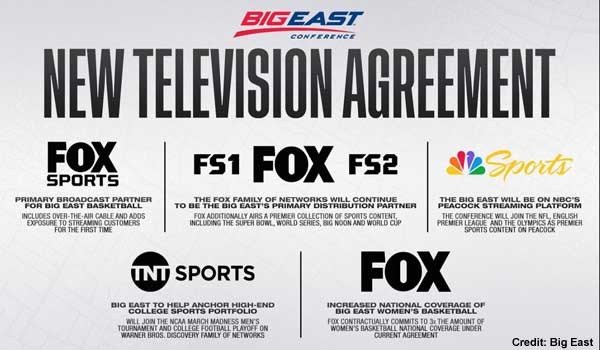 As reported last week, the Big East Conference has confirmed a six year multi-network media rights deal."The new agreement, which will span from 2025-26 through 2030-31, encompasses coverage on Fox Sports (FOX, FS1, FS2), NBC Sports (NBC, Peacock) and TNT Sports (TNT, TBS, truTV and Max)," reads the release. "The agreement will provide major national broadcast, cable and direct to consumer streaming coverage of Big East men's and women's basketball games and Olympic sport championship contests. The Big East's current agreement with Fox Sports is scheduled to expire after the 2024-25 academic year.Fox Sports will feature at least 80 Big East men's and women's basketball contests across the regular season and postseason beginning in 2025-26. In addition, the FOX broadcast network will remain the home of the Big East Men's Tournament Final through 2031." Although the agreement does not begin until the 2025-26 season, Peacock will stream 25 conference games this upcoming season and the first and second rounds of 2025 Big East men's basketball tournament. A big winner in the deal: women's basketball, with up to 65 regular season games and the Big East women's basketball tournament across the partners, a step up from the less popular FloSports platform. Now the question: how much was negotiated per school? Officials aren't saying...yet. Georgetown Gains In Learfield Cup Rankings Georgetown University finished 53rd in the Learfield Directors Cup, a measure of post-season performance among Division I schools co-sponsored by the National Association of Collegiate Directors of Athletics and Learfield Sports. This is the highest finish for the University in 20 years.Georgetown has finished as the top ranked Big East program in seven of the last 11 years.Points are awarded based on a school's participation and progress through 20 NCAA men's and women's championship events. A total of 306 of 359 Division I teams qualified for some post-season competition in 2023-24. Big East schools include the following 1. Georgetown (53rd, up from 67th) 2. Villanova (73rd, up from 133rd) 3. Connecticut (81st, up from 84th) 4. Providence (95th, up from 129th) 5. Creighton (105th, down from 88th) 6. Marquette (129th, down from 96th) 7. St. John's (152nd, down from 148th) 8. Xavier (178th, down from 99th) 9. Butler (210th, down from 170th) 10. DePaul (234th, unranked in 2023) 11. Seton Hall (306th, down from 214th) Georgetown's finishes since 1994 are below.
Georgetown, Maryland Announce Series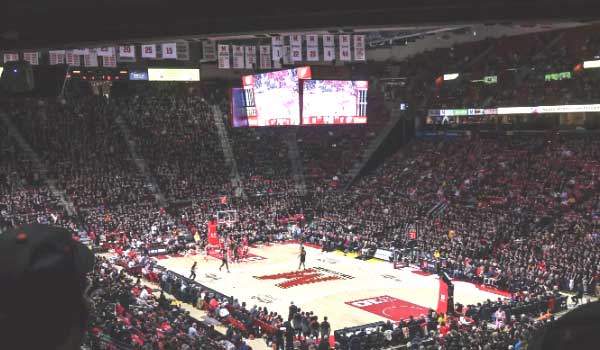 Delayed but not denied, Georgetown has signed a four year scheduling agreement with the University of Maryland beginning in the 2025-26 season.
ADDITIONAL COVERAGE
Strongly hinted by head coach Ed Cooley in early April, the series appeared to be off the table following a series signed by the Terrapins with Marquette next season. The four year series marks the first multi-year scheduling agreement between the schools in over four decades, when the schools met annually from the 1935-36 through the 1979-80 seasons, excepting World War II and a one year gap in 1976-77.Per a release at both schools, Maryland will host the first and third games in the series, beginning in 2025-26, with Georgetown hosting the other two. The Hoyas' only home game with the Terrapins in the interving years drew an average of 13,154 in 2016, a reflection of a once-fierce local rivalry that was lost. The series ended in 1980 following Georgetown's upset of the #3-ranked Terrapins in two games the prior season, including a 74-68 Georgetown win in the NCAA Eastern Regional semifinals. Both coaches were blamed for the series ending, though Maryland coach Charles (Lefty) Driesell later said it was his doing. A neutral site game at Capital Centre in 1993 renewed the series for one game, an 84-83 overtime win over the 15th ranked Hoyas that began Maryland's decade long climb out of scandal, with nine consecutive NCAA bids en route to the 2002 NCAA championship. The teams met in neutral site games in 2001 and 2008 and a two game series in 2015 and 2016 as part of the now defunct Big East-Big Ten Gavitt Games. Over the five games played since 1993, Maryland owns a 4-1 advantage. Both teams have struggled with attendance in recent seasons. Once a near guarantee to regularly sell out the 17,950 seat Xfinity Center, Maryland averaged just 13,283 a game in 2023-24. Georgetown averaged 6,755 at the 20,500 seat Capital One Arena last season. 2024-25 Depth Chart Spring has turned to summer, with Georgetown carrying just 10 of an available 13 scholarship players into the 2024-25 pre-season.Will there be any additions? Hopes that Georgetown would land a veteran center to assist Drew Fielder and Thomas Sorber have largely been dashed, and while some much less heralded players remain elsewhere, the staff may simply go with what they have, hope no injuries arise, and focus on the 2025 class, though the lack of depth may put a ceiling on how far Georgetown can distance themselves above the Big East cellar.With four walk-ons on the 2024-25 roster, the tentative depth chart into the summer looks something like this, with freshman in blue and incoming transfers in gold:
Hon. Ricardo M. Urbina (1946-2024)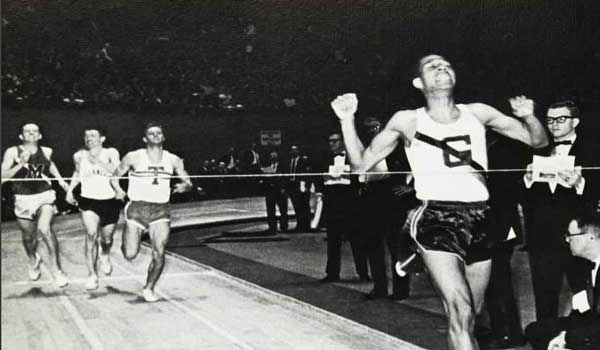 Away from basketball, news of the passing of former Georgetown All-American and federal judge Ricardo ("Rick") Urbina (C'67, L'70) at the age of 78.
OBITUARIES
A four year letterman in cross country and track, Urbina won the NCAA indoor championship in 1966 at the 880 yard race, setting a meet record at 1:51.9, and won IC4A championships in both indoor and outdoor races at the 800 meter and half mile marks. Denied an opportunity to train with the all-white New York Athletic Club, Urbina fell just short of qualifying for the 1968 U.S. Olympic team.Urbina chose to pursue a career in law, graduating from Georgetown with a J.D. in 1970, taught at Howard University Law School from 1974 to 1981, and was appointed an associate judge of the D.C. Superior Court by Ronald Reagan in 1981. In 1994, Bill Clinton appointed him to the U.S. District Court, where he served through 2012. Judge Urbina was selected for the Georgetown University Athletic Hall of Fame in 1978 and received the Samuel Halsey Award in 2005. A 2022 interview with Urbina appears in this link to the "We Are Georgetown" oral history project. Supreme Cook To Oregon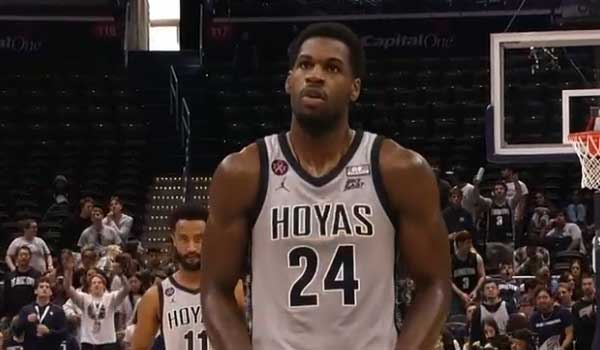 The last of Georgetown's 2023-24 transfers has a home, as center Supreme Cook signed with Oregon today.Cook, a three year veteran of Fairfield, averaged 10.5 points and eight rebounds last season for the Hoyas, and announced his transfer on April 25. While there was some online fan chatter that Cook could perhaps return to Georgetown in the absence of a center prospect in the portal, this was unlikely from the start, as Cook was actively seeking opportunities elsewhere.The move comes one day after Oregon center N'Faly Dante, who averaged 17.0 points and 9.2 points last season, lost an NCAA appeal for a sixth season at the school. 2024-25 Jersey Numbers Posted Its roster technically remains behind the doors of the Thompson Center, but a social media post Thursday lists the jersey numbers for the 2024-25 Georgetown Hoyas.Returning players Jayden Epps (#10) and Drew Fielder (#20) retain their numbers from 2023-24 but everything else is new:
Report: Big East Nears Media Rights Deal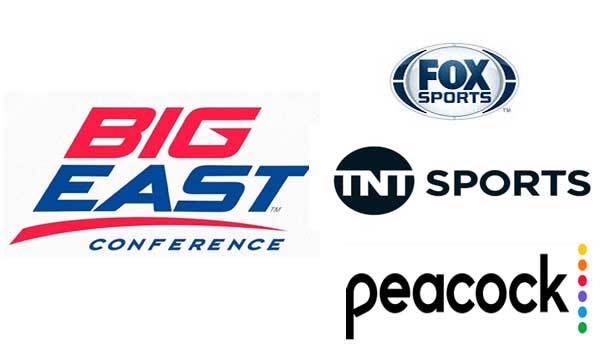 With a year remaining in its 12 year, $500 million media rights deal with Fox Sports, news followed Wednesday of an upcoming expansion of the Big East's television partners."Big East men's and women's college basketball is on the verge of adding new television partners as NBC Sports and TNT Sports are expected to join Fox Sports in presenting games beginning in the 2025-26 season," reported The Athletic, now a subsidiary of the New York Times. In Andrew Marchand's article, which did not quote any specific terms of the agreement, he suggests that "while Fox Sports will remain the top partner, both NBC, which will feature most of its games on Peacock, and TNT Sports, which operates the streaming service Max, are anticipated to add a large number of games."The past 15 months have seen unprecedented changes in the media rights landscape, particularly in college athletics. In May 2023, ESPN wrested the long running SEC football contract from CBS, paying $3 billion over 10 years for 12 weeks of Saturday games and the SEC championship game. Later that summer, the Big 12 signed a 10 year, $2.3 billion extension with ESPN and Fox, while the Big Ten signed a seven year, $8 billion media deal across NBC, CBS, and Fox. The lack of signing a media deal with Pacific-12 conference caused 10 of its 12 schools to leave for the Big Ten, Big 12, and for two schools without a home (Stanford, Cal), the ACC. The departures rendered the Pac-12, with roots dating back to 1915, defunct. Add to this the recent announcement of a $76 billion deal to relocate the NBA from TNT to NBC in 2025, and two things became apparent: 1) networks will pay for content, particularly football, but 2) with relocation of rights, networks will struggle with capacity to broadcast events, particularly on linear (broadcast and cable) networks. Each of these factors likely play into the Big East's approach, if the report is accurate. The current media deal with Fox, approximately $4.5 million per school per year, was announced in 2013 following the Big East tournament and securing of the intellectual property from what is now the American Athletic Conference, was a game changer for Fox and its new network, Fox Sports 1. The Fox agreement provided nearly 100 percent coverage of Big East games on linear networks in lieu of online channels such as ESPN+. For a number of seasons, Big East basketball was the major driver of ratings on FS1 and its less popular sister, FS2. The 12 year deal freed the reconstituted Big East from a bad-faith partner in ESPN, who subsequently stopped referring to the conference in its basketball coverage for a number of seasons thereafter. True to form, this news was not covered today on ESPN.com. The Big East maintains a close relationship with Fox and by all accounts Fox was eager to renew the deal, though not at the price point it offered for the Big Ten or Big 12. (Northwestern University now earns more in media rights ($70 million) than the entire Big East, a number which is expected to top $100 million per year for Big Ten schools by 2031.) The arrival of these additional conferences to Fox programming will push more of these teams' football and basketball games onto FS1 and FS2, limiting the ease that the Big East could schedule games in the past. Conversely, the Big East was concerned about streaming rights, given that more homes now subscribe to streaming services than cable, and approximately one million customers each year are dropping cable service altogether. Fox is the only major content provider among Paramount (CBS), Comcast (NBC), Disney (ABC/ESPN), and Warner Bros. Discovery (TBS, TNT, Tru TV) not to have a streaming option. Without such an option, the Big East would be sub-licensing more content to other networks, such as CBS Sports Network, the CW, or regional networks not available on all cable systems. The Athletic article is not specific on the relationships among the partners but some clues can be gathered:
An agreement like this could provide the Big East with numerous options across the ever changing landscape: 1) broadcast rights through Fox and perhaps even NBC; 2) cable coverage through FS1, FS2, and TNT, with TNT's connections to TBS and Tru; and 3) streaming coverage worldwide through Peacock and perhaps Max. Add in the variables of reduced NCAA payments to schools as part of the House v NCAA decision, NIL uncertainties, and the specter of revenue sharing, and this deal takes on added significance if the Big East is to compete at the levels it has enjoyed over the past 12 years. What is not known, publicly at least, is the value of these rights. There is no way the Big East can get figures enjoyed by the other major conferences because it does sponsor football, but it needs a multiplier of some sorts from the 2013 agreement so as to not encourage schools (particularly but not exclusively Connecticut) from seeking a better conference deal elsewhere. The role of CBS Sports Network, the less heralded cable arm of CBS, is not clear. "Back in March, reports indicated that the conference was "making a lot of progress" in agreeing to new deals with Fox and CBS but was also holding out one more package for a third media partner," writes Joe Lucia at Awful Announcing. "While Fox remaining in frame isn't much of a surprise (especially given comments from Big East Commissioner Val Ackerman last year), the entrance of both NBC and TNT is, especially at the possible expense of CBS. However, the CBS deal consists of games sub-licensed from Fox, and while the structure of this deal remains to be seen, it does seem plausible the company could end up with a similar deal as a fourth partner." Marchand's article noted that "NBC Sports, TNT Sports and Fox Sports all declined to comment. A Big East spokesperson didn't immediately return messages." Deja Vu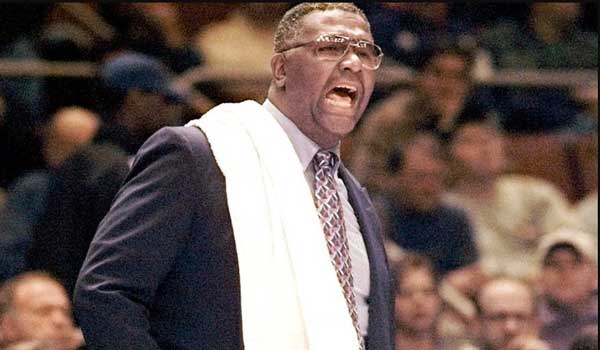 Today's college basketball news centers around Connecticut coach Dan Hurley, who declined a six year, $70 million offer to become coach of the NBA's Los Angeles Lakers: a big win for UConn, for the Big East, and for its upcoming media rights contract."One of the sport's biggest characters is staying around, and turning down the Lakers to do so is quite a feather in the cap for Connecticut and college hoops," wrote John Fanta at Fox Sports.It was nearly a quarter century ago this month that former Georgetown coach John Thompson faced a similar decision. On June 14, 1990, various media sites reported that Thompson had been approached to join the Denver Nuggets, but did not offer specifics. Four days later, in a Washington Post article dated June 18, Mark Asher reported the 48 year old Thompson had been offered a five year, $3.5 million contract to become general manager of the Nuggets, along with a four percent equity stake in the franchise--a figure worth just under $3 million in 1990, but worth over $130 million in the franchise's latest valuation. The salary alone would have more than doubled the $317,134 Thompson earned in the prior fiscal year from Georgetown. "It's a once-in-a-lifetime offer," said one NBA executive in the article. "He won't have to coach; there won't be as much pressure; and it'll be a new challenge." Another source told the Post there was a "99 percent" likelihood Thompson would accept the offer. A day later, the Post reported that Nike was prepared to offer Thompson a senior management role if he declined the Nuggets' offer. "And what of Georgetown if Thompson leaves?" asked Post columnist Tony Kornheiser on June 20. "I suspect it plummets." "Thompson has produced no such logical heirs. He has kept Craig Esherick and Mike Riley with him [but] they have not developed their own coaching personality, to say nothing of an imprimatur. From soup to nuts, John Thompson is Georgetown basketball, a larger-than-life figure-provocative, intriguing, controversial. Inadvertently, his need for control reduced the size of everyone around him. Thompson feels great loyalty to people who have been loyal to him. He is said to be trying to place Esherick or Riley to succeed him, and either would have to take it...[but] Georgetown's next coach may not last long. If Thompson leaves, the spot where everyone wants to sit is second, behind the poor guy with his head on the block." Two days later, Thompson asked for an extension to consider the offer, then declined a day later on June 23, citing that "the time was not right" and noted "the leaking of information" in the press interfered with him making a decision. Would Thompson have accepted the role if it had stayed out of the press? We'll never know. Unlike the expectation that Hurley will get an immediate boost in compensation from his current six year, $32 million contract, Thompson took a different approach. Though his salary grew to $610,040 at his retirement in 1998-99, Thompson and Georgetown set up a deferred payment plan that paid him $400,000 a year for at least seven years after leaving Georgetown, a figure which was not reported in the press until 2006.
Transfer Portal: Slim Pickings? At the end of the first week of June, most 2024-25 rosters are full, except for Georgetown. With three open scholarships and the need for a veteran center following the departure of Supreme Cook, what's left?The web site VerbalCommits.com list 45 centers in the transfer portal that have not signed with another school. Just three of these saw appreciable time on the court last season, and many come from programs far removed from the competitive level of Big East.It's not clear if Georgetown is recruiting any of these players, but without some veteran support in the portal, an unsigned junior college prospect, or a heretofore unknown international option, a pair of underclassmen in sophomore Drew Fielder and freshman Thomas Sorber will be Georgetown's only options in the pivot. As for Cook, he has not signed with any school since announcing his transfer on April 24. Various online reports suggest Cook is seeking other opportunities in the NIL space and is not likely to return to Georgetown. Here is the list of centers remaining in the portal (updated through 6/19):
Athletics Announces $4 Million Gift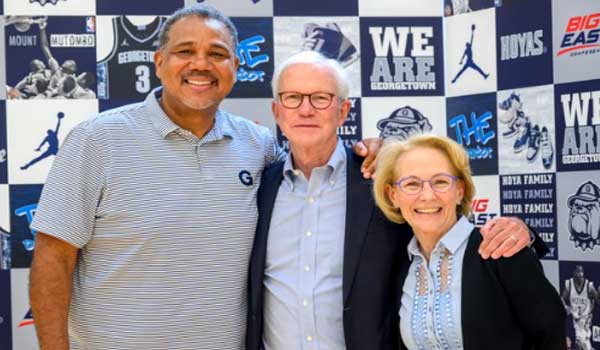 A $4 million gift by Amb. David Welch (F'75) and his wife Gretchen was announced today.A total of $2 million will be an endowed fund for initiatives through the athletic director's office, with the remaining $2 million will serve for current-use operations of the men's basketball program. Following the gift, the men's basketball practice court has been named in their honor."We are immensely grateful to David and Gretchen for this significant display of support for the future of our men's basketball program under Coach Cooley's leadership," said athletic director Lee Reed in a statement. "Their generous gift makes a profound statement to our student athletes, coaching staff, and greater community." Men's Basketball APR Improves, Avoids Penalty
Academic performance metrics for men's basketball showed improvement in 2023, according to NCAA data released Tuesday.ADDITIONAL COVERAGE While significant improvement was reached with the 2022-23 team (a 958 in 2022-23 versus a school low 860 in 2020-21), Georgetown's multi-year APR for men's basketball is 939, ranks 316th of 361 Division I schools overall. While Georgetown was under the minimum 930 threshold in two consecutive seasons, the penalty phase was halted as a result of COVID-19. Having been reinstituted this year, DePaul was one of 11 Division I schools subject to penalties, which include reduced practice time for a first offense in falling below the 930 standard. The Big East multi-year results among men's basketball are below:
The Georgetown multi-year results among all sports are below (note that men's rowing, sailing, and squash are not included in that they are not recognized NCAA sports.)
Alonzo Mourning Diagnosed With Prostate Cancer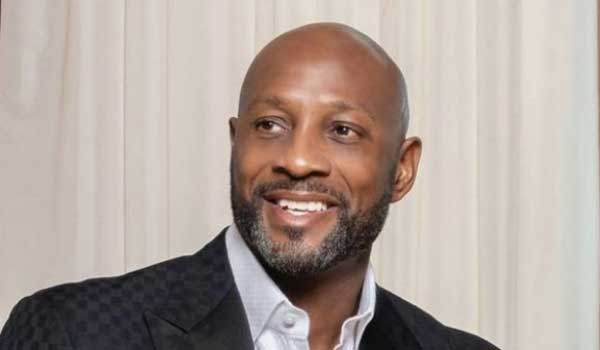 Former Georgetown All-American Alonzo Mourning (C'92) announced Monday he has undergone surgery following a diagnosis of Stage III prostate cancer.In a statement, the 54 year old Mourning noted that "If I had ignored getting checked and let this go, the cancer would've spread through my body. Unfortunately, as men, we don't like to go to the doctor, but this is the only way to find out what's going on in your body. Prostate and even colon cancer are silent killers and many men won't get those diagnosis until it's too late. We live in a world where it's taboo among men to talk about health issues. If I didn't get routine checkups, I probably wouldn't be here to talk about this. I want men to be proactive with their health."The news comes in the wake of a social media post last week that reports a fellow teammate of Mourning while at Georgetown, Brian Kelly (B'92), was also diagnosed with prostate cancer. Prostate cancer is the second-leading cause of cancer among men in the United States; however, it has a five year survival rate of 99 percent if treated early. Men aged 45 and above should be tested annually via a PSA blood test and/or digital exam, and beginning at age 40 if there is a family history of same. Additional information can be found at this link to the Lombardi Comprehensive Cancer Center. | |||||||||||||||||||||||||||||||||||||||||||||||||||||||||||||||||||||||||||||||||||||||||||||||||||||||||||||||||||||||||||||||||||||||||||||||||||||||||||||||||||||||||||||||||||||||||||||||||||||||||||||||||||||||||||||||||||||||||||||||||||||||||||||||||||||||||||||||||||||||||||||||||||||||||||||||||||||||||||||||||||||||||||||||||||||||||||||||||||||||||||||||||||||||||||||||||||||||||||||||||||||||||||||||||||||||||||||||||||||||||||||||||||||||||||||||||||||||||||||||||||||||||||||||||||||||||||||||||||||||||||||||||||||||||||||||||||||||||||||||||||||||||||||||||||||||||||||||||||||||||||||||||||||||||||||||||||||||||||||||||||||||||||||||||||||||||||||||||||||||||||||||||||||||||||||||||||||||||||||||||||||||||||||||||||||||||||||||||||||||||||||||||||||||||||||||||||||||||||||||||||||||||||||||||||||||||||||||||||||||||||||||||||||||||||||||||||||||||||||||||||||||||||||